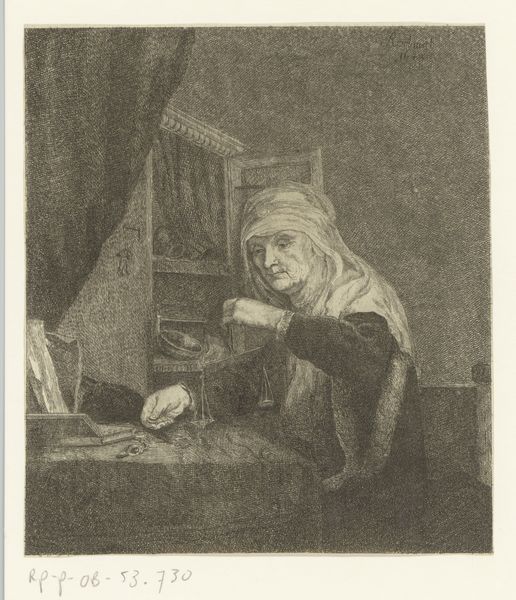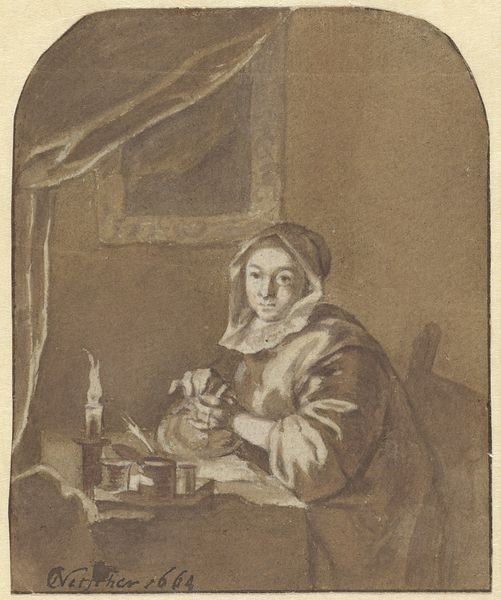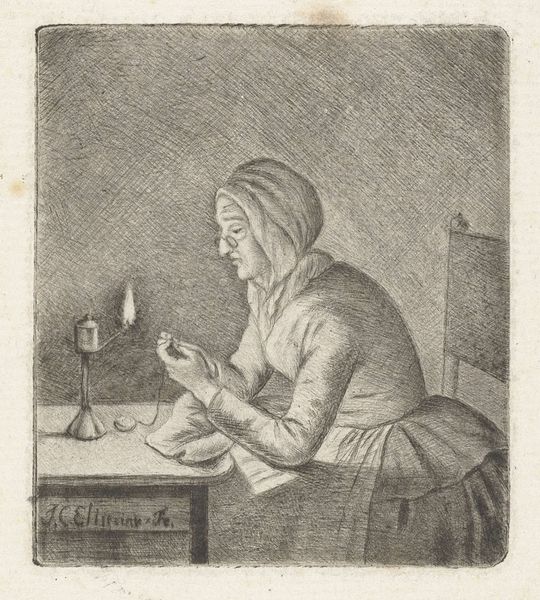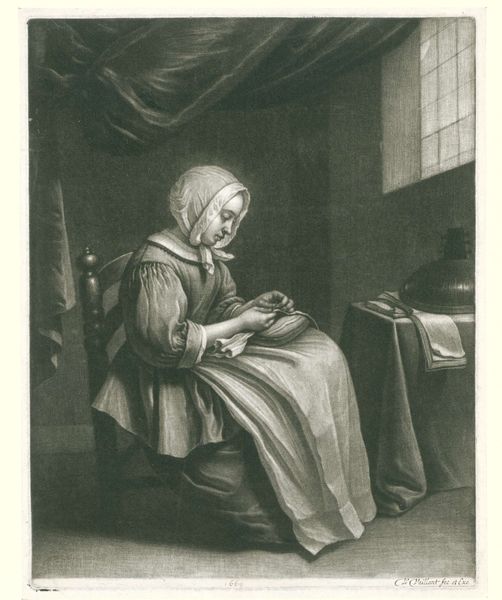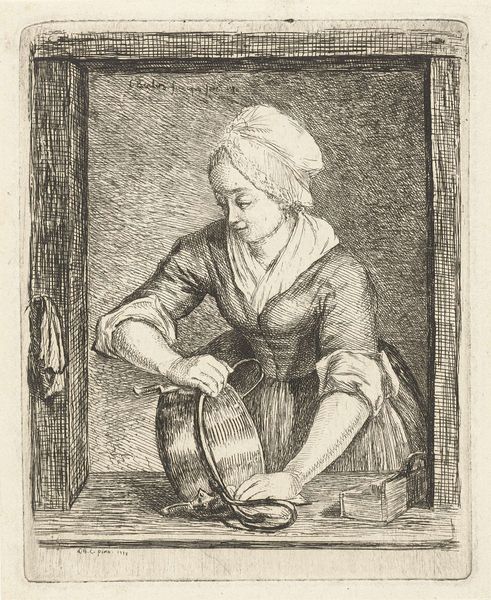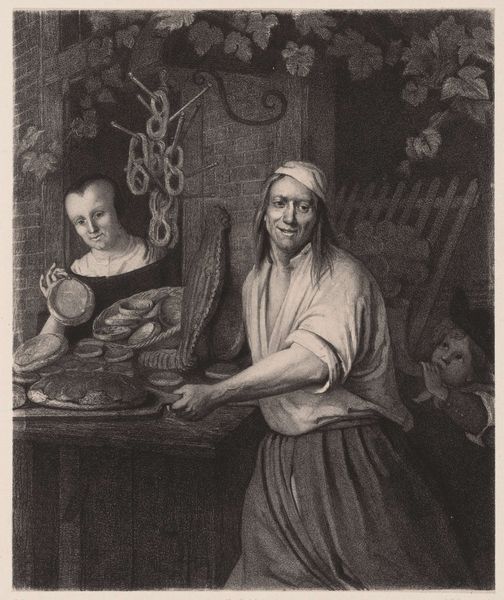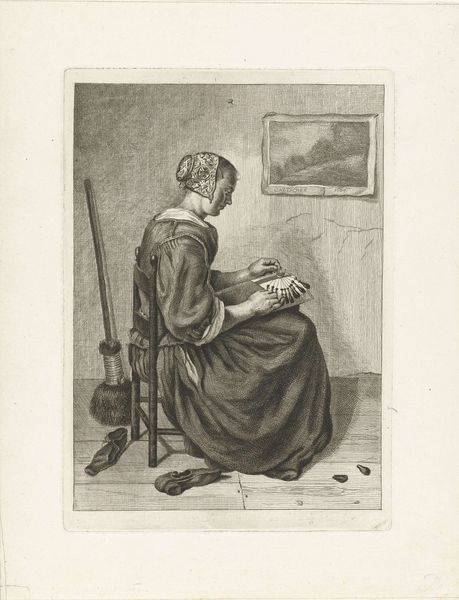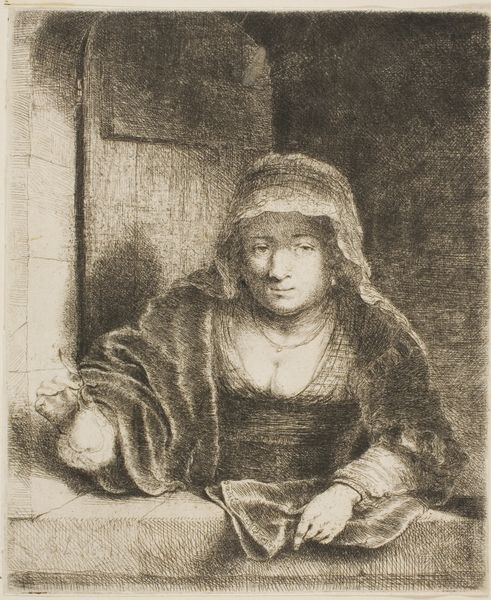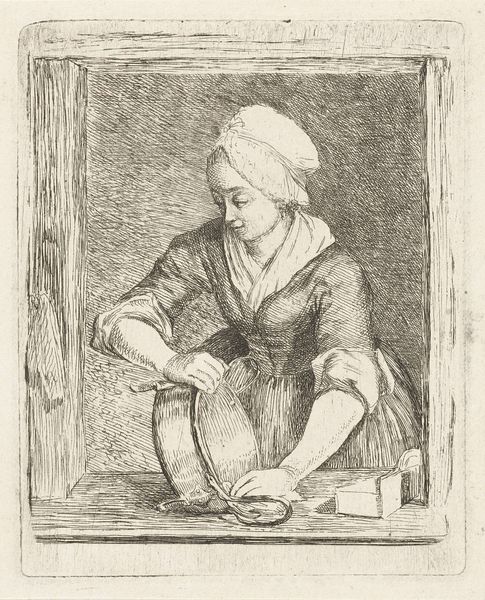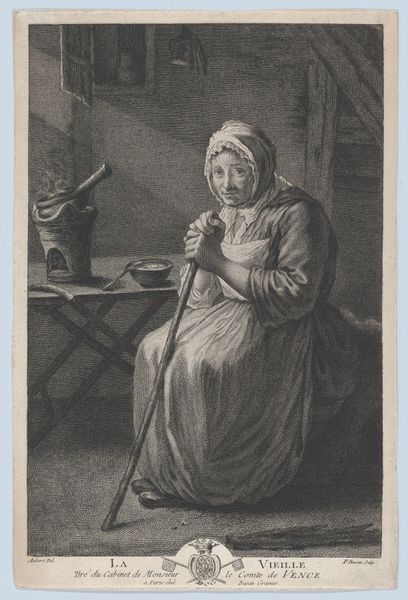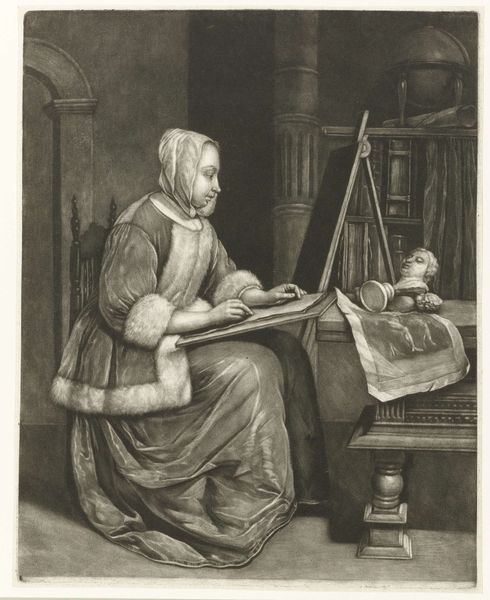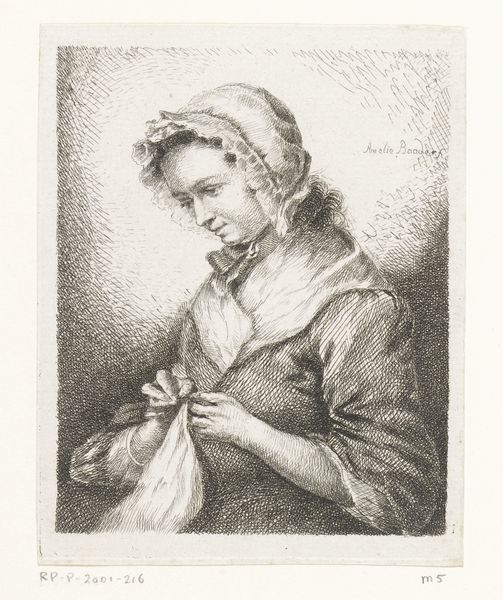
drawing, print, etching, paper, charcoal
#
portrait
#
drawing
# print
#
etching
#
charcoal drawing
#
paper
#
genre-painting
#
charcoal
#
rococo
Dimensions: 142 × 117 mm
Copyright: Public Domain
Editor: So, this is Jean-Pierre Norblin de la Gourdaine's "Woman at a Window," made in 1759. It’s a charcoal drawing, etching and print on paper. There’s a sort of…starkness to the image. It’s not a flattering portrait, but feels honest. How do you interpret this work? Curator: Well, immediately, I think about the societal constraints placed on women during the Rococo period. Consider the title: “Woman at a Window.” It speaks volumes about a woman's limited sphere of influence. Confined to domestic spaces, the window becomes a threshold, a space for observation but not necessarily participation. Does the woman’s gaze meet the viewers gaze, or is she looking away, at a world out of reach? Editor: She's meeting our gaze directly, which does feel… rebellious almost. Knowing this was made in 1759, it's intriguing. Was the artist perhaps critiquing these social limitations through his art? Curator: Precisely! Norblin often engaged with social critique through genre-painting. Notice how the etching emphasizes the contrast between light and shadow. Light falls upon her face, making her the main focus. Her dress suggests wealth and, thereby, privilege. Can we therefore assume, knowing the limitations imposed upon women during the 18th century, that Norblin intended this artwork as a powerful feminist statement of protest and resistance against female isolation? Editor: It makes me consider that perhaps the window itself is also symbolic – a barrier, yet also an opening to possibilities. Maybe her gaze is hopeful rather than simply confrontational? Curator: That is indeed the right line of thinking. Thinking about art's capacity to transcend its own time, what would you say to a young, female artist looking at this image? Editor: I'd suggest that she see in it the ongoing dialogue surrounding gender, identity, and the artist's role in social commentary. Art isn't just aesthetic, it is a social practice and cultural artifact. Curator: I agree. This image really underscores how much historical context matters when interpreting art. Thank you, this has been truly enlightening!
Comments
No comments
Be the first to comment and join the conversation on the ultimate creative platform.
